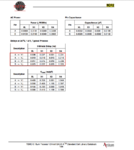AMSA84
Advanced Member level 2
- Joined
- Aug 24, 2010
- Messages
- 577
- Helped
- 8
- Reputation
- 16
- Reaction score
- 8
- Trophy points
- 1,298
- Location
- Iberian Peninsula
- Activity points
- 6,178
Follow along with the video below to see how to install our site as a web app on your home screen.
Note: This feature may not be available in some browsers.
How much difference in propagation delay and rise tiime do you expect? I wonder if it's significant in relation to process variations?Having the clock input at the top PMOS would increase the delay to the output.
So it is better to have the control signal on top since it would be switching less.
Having the clock input at the top PMOS would increase the delay to the output.
So it is better to have the control signal on top since it would be switching less.
How much difference in propagation delay and rise tiime do you expect? I wonder if it's significant in relation to process variations?
